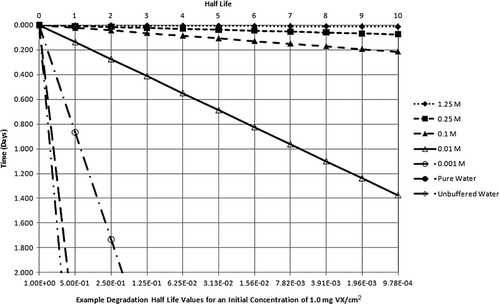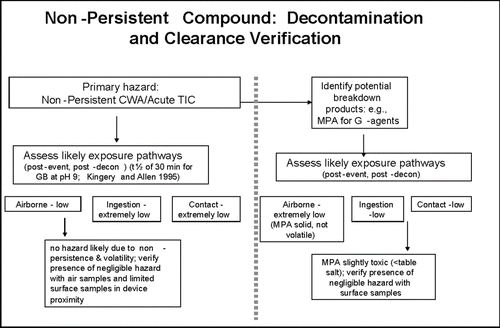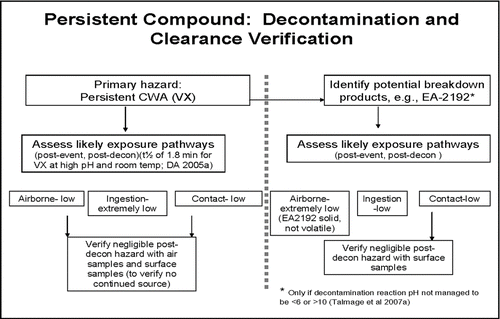Figures & data
Table 1 Response and recovery phases to a chemical terrorist attack. Current assessment focus is on developing guidelines to direct Remediation/Cleanup and Restoration/Re-occupancy decisions and activities.a
Table 2a Chemical and physical properties of CWAs and TICs.
Table 2b Chemical and physical properties of CWAs and TICs.
Table 3 Properties of principal CWA degradation products (commercial compounds are provided for comparison).
Figure 3 Effects of natural attenuation only (e.g., no active decontamination) on persistence of liquid GB spike on indoor airport surfaces; 1 μl droplet (containing 910 μg GB) (CitationLove et al. 2009; Love et al. in review). The percent of GB remaining is depicted relative to the amount of GB initially applied to the surface. (a) Short-term persistence (within 1 week). (b) Longer-term persistence (within 1 year).
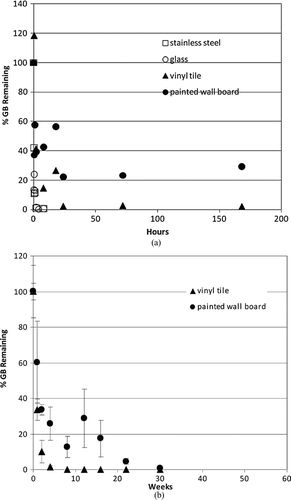
Figure 5 Effects of natural attenuation only (e.g., no active decontamination) on persistence of liquid VX spike on indoor airport surfaces; 1 μl droplet (containing 990 μg VX) (CitationLove et al. 2009; Love et al. in review). The percent of VX remaining is depicted relative to the amount of VX initially applied to the surface. (a) Short-term persistence (within 1 week). (b) Longer-term persistence (within 1 year).
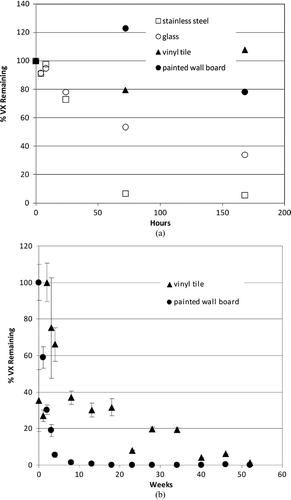
Figure 4 Effects of natural attenuation only (e.g., no active decontamination) on persistence of liquid HD spike on indoor airport surfaces; 1 μl droplet (containing 790 μg HD) (CitationLove et al. 2009; Love et al. in review). The percent of HD remaining is depicted relative to the amount of HD initially applied to the surface. (a) Short-term persistence (within 1 week). (b) Longer-term persistence (within 1 year).
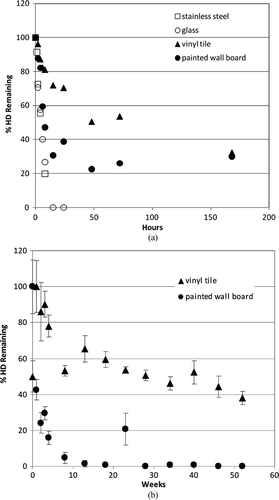
Table 4 Half-lives of liquid VX and HD in hydrolysis or oxidation solutions with estimated agent remaining after 48 hour degradation (initial unit concentration of 1.0 mg/cm2).
Figure 6 2-day hydrolysis degradation of liquid VX in NaOH solutions and water (half-life determinations from experimental data of CitationYang et al. 1994 and Yang 1999 applied to a unit concentration).
